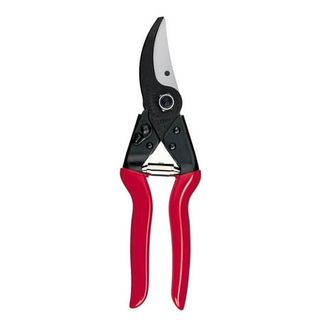They're beautiful but deadly – 5 poisonous perennials that every gardener should know about, and the safer alternatives to grow instead
Some of the prettiest plants can pack a dangerous punch
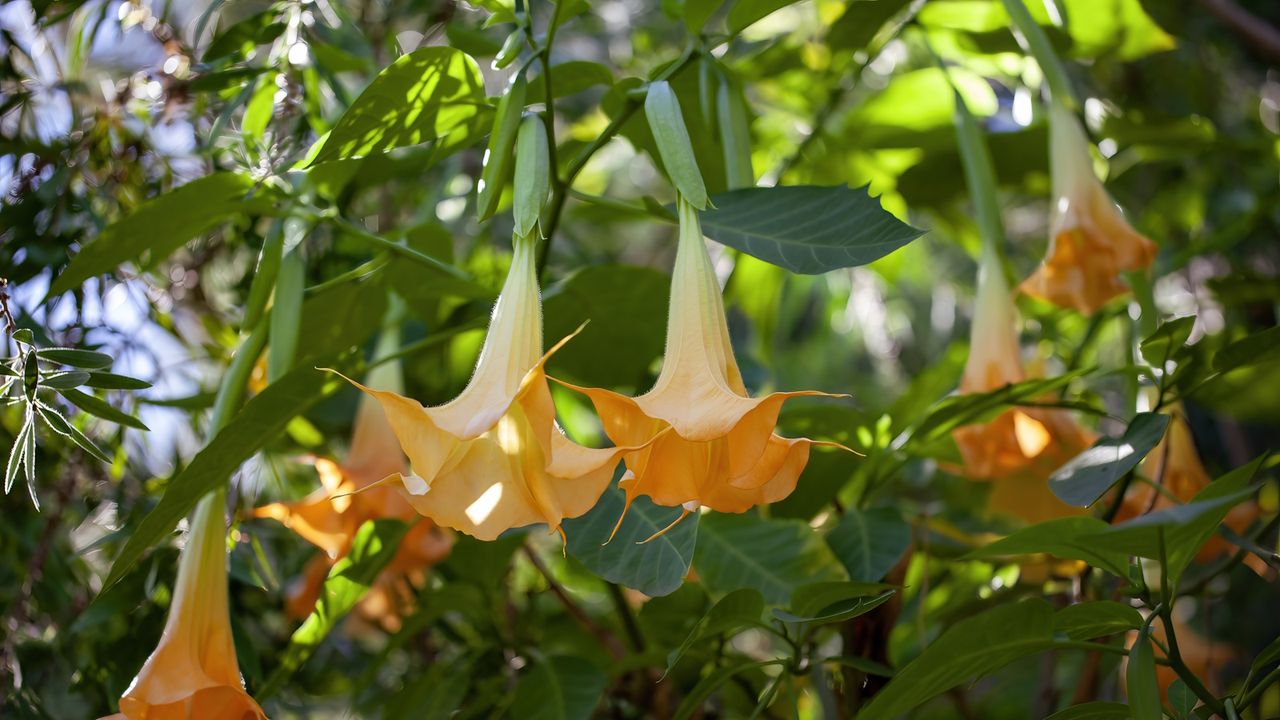

Many popular garden perennials hold a hidden secret. While they might appear elegant and joyful, some perennials contain toxic compounds that are harmful to humans and animals. These plants often thrive in spring and summer, producing stunning flowers and lush foliage, but with this beauty, there comes a risk.
This is not to say, however, that gardeners should ban these plants from backyard borders. Many poisonous perennials have remarkable decorative value and when handled with care, can be safely enjoyed. As a former professional gardener, I have learned the hard way to always be mindful of the potential risks of beautiful species. For example, I always approach euphorbia plants wearing a thick pair of gloves, having suffered from the toxic sap one too many times.
So, if you are curious about which of the best perennials pose a hidden risk, you have come to the right place. Here, I take a closer look at five poisonous perennials, while also providing safer alternatives to consider if you have pets or young children.
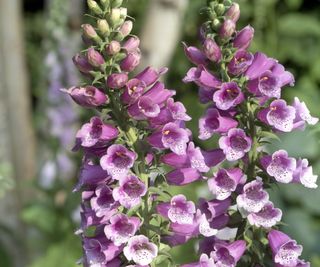
5 poisonous perennials every gardener should know about
Regardless of where you live or your US hardiness zone, chances are you might have one or two poisonous plants growing in your yard. The good news is that serious or deadly poisoning by plants is very uncommon. If you do come into contact with toxic plants, the most likely effect will be skin reactions which are generally low risk, if uncomfortable. Here are five poisonous perennials to watch out for.
1. Euphorbia
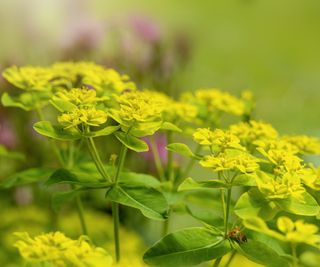
Euphorbias are some of the easiest perennials to grow, notably hardy and tolerant of many different light and soil conditions. Gardeners and designers alike consider euphorbias as some of the best architectural plants, prized for adding height and impact to borders.
However, euphorbias contain a toxic milky sap that is a well-known irritant. If you have ever pruned a euphorbia without gloves, you will likely only make this mistake once. Not only does this sap cause a painful rash, but it can cause severe discomfort if it comes into contact with the eyes.
Despite this, euphorbias remain garden favorites, but it is probably best to keep them away from patio areas or pathways. For a similar succulent aesthetic, consider planting Hylotelephium, commonly known as sedums, which can be grown down to US hardiness zone 3.
Sedum 'Autumn Joy' live plants are available to order from Amazon.
2. Monk's Hood
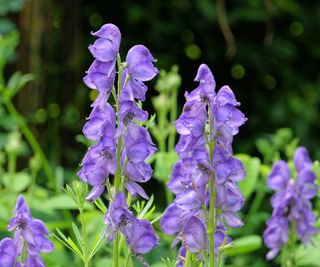
'Monkshood, or Aconitum, produces deep blue, hood-shaped blooms,' says Reese Robbins, garden expert and creator of Just Pure Gardening. 'While visually stunning, this poisonous perennial should be approached with caution.
'Monkshood contains potent aconitine and other alkaloids that are highly toxic,' Reese adds. 'Poisoning can occur after accidental ingestion, but the toxins will also irritate the skin and cause a tingling sensation. Gardeners should always wear gloves when dealing with this perennial and wash their hands with warm, soapy water after handling.'
For a safer alternative, consider learning how to grow verbena. This non-toxic perennial produces lofty spires of pink and purple blooms that pollinators adore. Verbena bonariensis, for example, can be grown down to US hardiness zone 7 and prefers a sunny spot and well-draining soil. Verbena seeds are available to order from Burpee.

Reese L. Robbins is the founder of Just Pure Gardening, a site full of fruit and vegetable growing guides, garden ideas, and garden product reviews.

These sturdy leather gardening gloves will keep your hands protected from toxic sap when handling poisonous plants in the yard.
3. Lantana
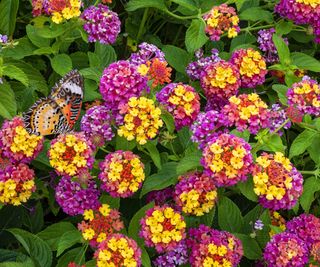
Lantana are popular plants for sunny borders and patio containers. With their vibrant petals, lantanas are an obvious choice for gardeners looking to create maximalist borders or flamboyant flower displays. However, many don't realize that the leaves and green berries are toxic to livestock and are dangerous to humans as well.
If you do grow lantana, be mindful when pruning or when collecting fallen berries. It is also advisable to keep the plant away from areas frequented by dogs and cats. Fortunately, the chemical compounds found in Lantana camara, scientifically known as Triterpenoids, do not affect birds, who can consume large amounts of berries without adverse effects.
'For a beautiful yet safe garden perennial, I suggest growing penstemon,' says Reese. 'With tall and impactful floral spikes, penstemons are a real showstopper. They can be grown down to US hardiness zone 4, and importantly, they are non-toxic, making this a safe option for family gardens.' Penstemon seeds are available to buy online from Amazon.
4. Angel's Trumpet

Don't be fooled by the name, the angel's trumpet is lethal. Prized for its pendulous blooms, angel's trumpet, or Brugmansia, is highly poisonous, and all parts of the plant contain significant quantities of alkaloids.
Children may be drawn to its large, attractive flowers, and worryingly, there are reports of blurred vision and dilated pupils following intoxication. Unless you can keep this plant in a safe location out of reach, it is best to avoid it.
If you enjoy the tropical garden aesthetic, try growing the cup and saucer vine, Cobaea scandens. Native to Mexico and tropical South America, this vigorous vine has white or purple bell-like blooms that look particularly impressive when grown across an arch or pergola. It is only hardy down to zone 9 but can be grown as an annual in most locations. Cup and saucer vine seeds are available from Amazon.
5. Hellebores
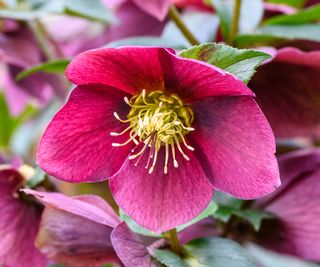
Hellebores are popular part-shade perennials, highly valued for their winter-flowering habit. Many different hellebore species are, however, poisonous, and toxic compounds can be found in the rhizomes, foliage and flowers.
For example, the popular Christmas rose, Helleborus niger, has a deadly history dating back for millennia. The roots of this plant are recorded as a biological weapon, notably used to poison the water supply during the ancient siege of Kirrha (595-585BC). While it may be hard to distinguish between fact and fiction when writing about the ancient world, hellebores are undeniably plants to approach with caution.
While you might not be overly concerned about digging up and ingesting the roots of a plant, it is a good idea to keep an eye on children and pets if you have many hellebores growing in the yard. For a safer option, try growing foam flowers, or Tiarella, which can be grown down to zone 3 and tend to flower early in spring. Importantly, they are a non-toxic perennial, so you won't need your gloves when pruning or planting - unless you want to keep your hands clean!
Live tiarella bare root plants are available from Amazon.
FAQs
Are foxgloves poisonous?
'Partial shade-loving foxglove, Digitalis purpurea, does contain compounds that can cause severe heart problems if ingested,' says Tabar Gifford, plant expert and American Meadows master gardener. 'Both the leaves and seeds produce a powerful toxic chemical. Instead, try growing meadow rue, Thalictrum rochebrunianum, which features airy clusters of lavender-pink blossoms and lacy foliage, providing a comparable vertical accent without the associated risks. Meadow Rue thrives in the same environment as foxgloves and as a nice bonus is a longer-lived perennial.'
'As a reminder, when handling any plant, it is advisable to wear gloves and wash your hands afterward to minimize potential skin irritation or allergic reactions,' Tabar adds. 'Plants, like people, are all different and may experience different reactions to plants. Poison Ivy, for example, can cause a massive reaction in some people, leaving others with minor irritation or no reaction. The skin of hyacinth bulbs always gives me a minor but unpleasant allergic-like reaction, while others are completely unaffected by handling these bulbs. Good advice is to always research the toxicity of plants before adding them to your garden and opt for non-toxic varieties to create a safe and beautiful environment.'
If you are interested in the healing properties of plants, take a look at our list of the best medicinal plants to grow in garden borders this year.

Tabar Gifford works as an American Meadows Master Gardener, and has a lifelong love for gardening and nature. With a background in environmental studies and sustainable community development, she enjoys combining her horticultural expertise with a commitment to education.
Sign up to the Homes & Gardens newsletter
Design expertise in your inbox – from inspiring decorating ideas and beautiful celebrity homes to practical gardening advice and shopping round-ups.

Thomas is a Content Editor within the Gardens Team at Homes and Gardens. He has worked as a professional gardener in gardens across the UK and Italy, specializing in productive gardening, growing food and flowers. Trained in Horticulture at the Garden Museum, London, he has written on gardening and garden history for various publications in the UK, including The English Garden, Gardens Illustrated, Hortus, The London Gardener and Bloom. He has co-authored a Lonely Planet travel book, The Tree Atlas, due out in 2024.
You must confirm your public display name before commenting
Please logout and then login again, you will then be prompted to enter your display name.
-
 Interior Designer Jake Arnold shares his expert tips for designing chic spaces that feel both sophisticated and cozy
Interior Designer Jake Arnold shares his expert tips for designing chic spaces that feel both sophisticated and cozyThe young British designer reveals his top design rules for creating cosseting interiors that don't compromise on style
By Jake Arnold Published
-
 I'm shopping Shea McGee's new outdoor collection with Target to help me give my backyard a chic, budget-friendly makeover in time for spring
I'm shopping Shea McGee's new outdoor collection with Target to help me give my backyard a chic, budget-friendly makeover in time for springThese affordable patio finds look so much more expensive than they are
By Charlotte Olby Published
-
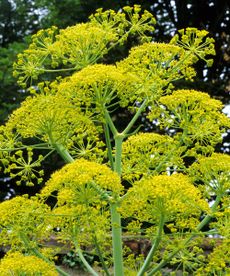 Are edimentals the new bedding plants? Why you should ditch petunias for parsnips – and enjoy beautiful, edible borders
Are edimentals the new bedding plants? Why you should ditch petunias for parsnips – and enjoy beautiful, edible bordersEdimental plants prove that borders can be both decorative and delicious
By Thomas Rutter Published
-
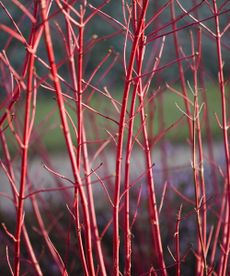 February is the ideal time to prune red twig dogwood – to maximize its bold, fiery display next winter
February is the ideal time to prune red twig dogwood – to maximize its bold, fiery display next winterOur expert-approved guide has all the information you need to know on when and how to prune red twig dogwood
By Thomas Rutter Published
-
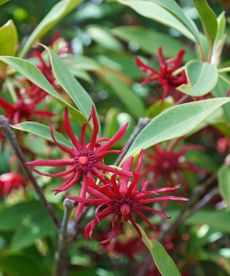 How to grow Florida anise – for a native evergreen shrub that thrives in shade
How to grow Florida anise – for a native evergreen shrub that thrives in shadeWith crimson spider-like blooms, this native shrub can elevate darker borders
By Thomas Rutter Published
-
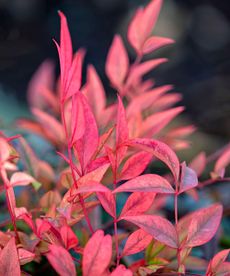 Best low-maintenance evergreen shrubs for a front yard – 5 easy-to-grow plants that will instantly boost curb appeal
Best low-maintenance evergreen shrubs for a front yard – 5 easy-to-grow plants that will instantly boost curb appealThese evergreens will maintain impact and interest all year long
By Thomas Rutter Published
-
 Best native plants to stop weeds – 5 ground covers, shrubs and perennials to keep unwelcome weeds out of your yard
Best native plants to stop weeds – 5 ground covers, shrubs and perennials to keep unwelcome weeds out of your yardWe reveal the best native plants to stop weeds from germinating and taking over your borders
By Thomas Rutter Published
-
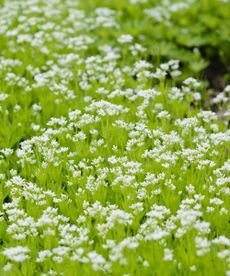 Easiest ground cover plants to grow – 5 expert-approved species that will quickly fill challenging areas of your yard
Easiest ground cover plants to grow – 5 expert-approved species that will quickly fill challenging areas of your yardThese ground cover plants are low-maintenance options for any border
By Thomas Rutter Published
-
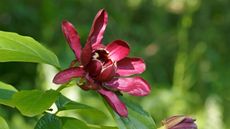 How to grow sweetshrub – an unusual flowering plant that dates back to the time of the dinosaurs
How to grow sweetshrub – an unusual flowering plant that dates back to the time of the dinosaursThis native shrub will add flowers and fragrance to your yard
By Thomas Rutter Published
-
 What is a paradise garden? How to use ancient design ideas to create a tranquil backyard escape
What is a paradise garden? How to use ancient design ideas to create a tranquil backyard escapeDiscover the key design principles of timeless paradise gardens
By Thomas Rutter Published
